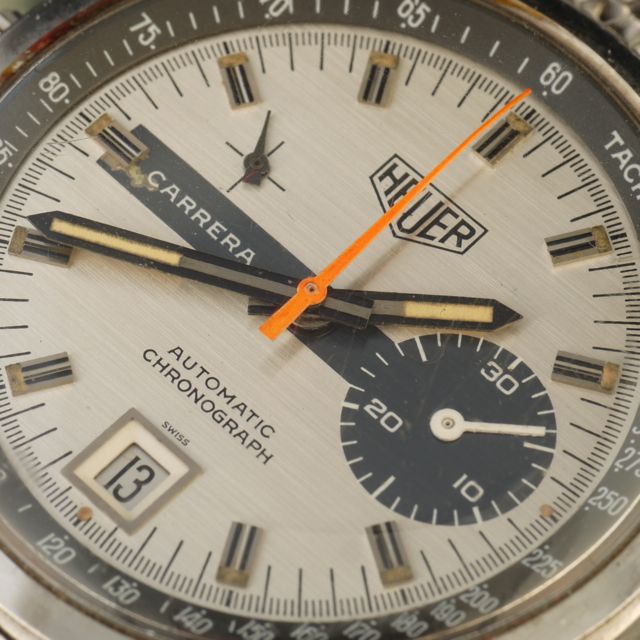
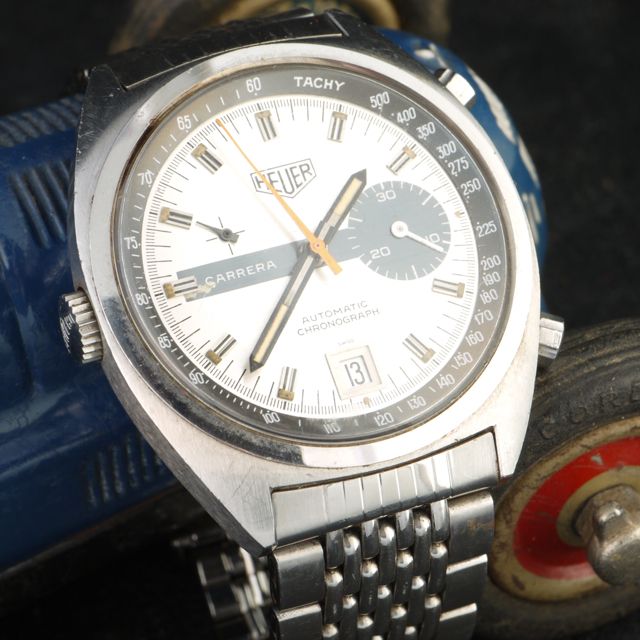
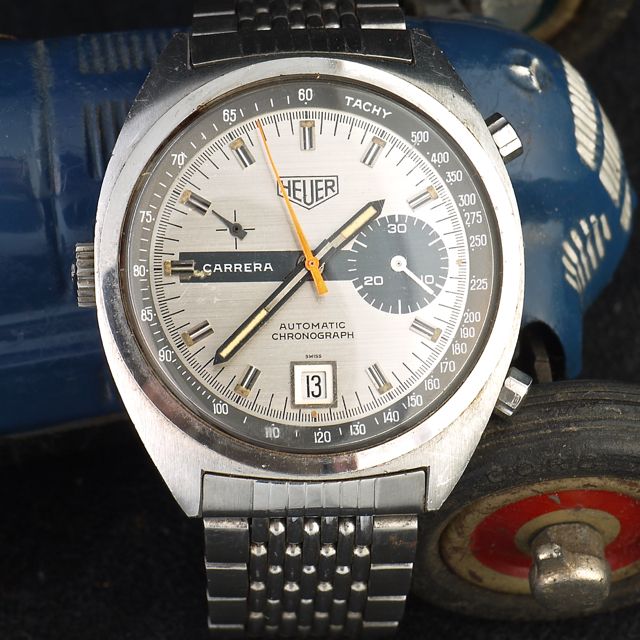
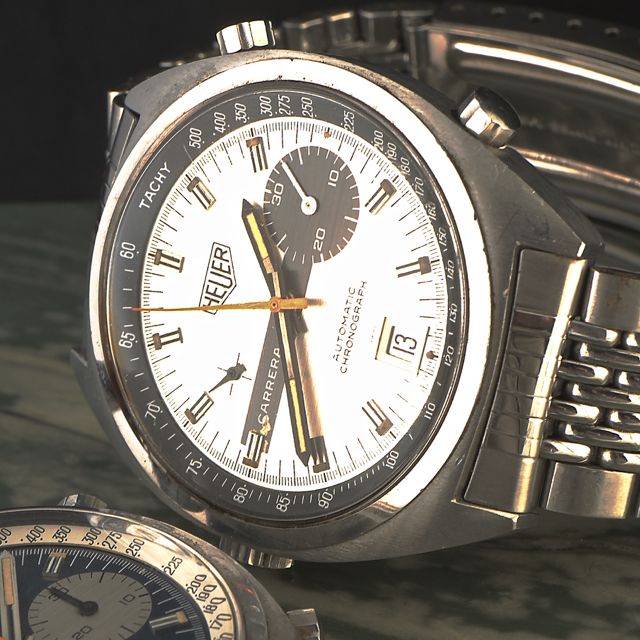
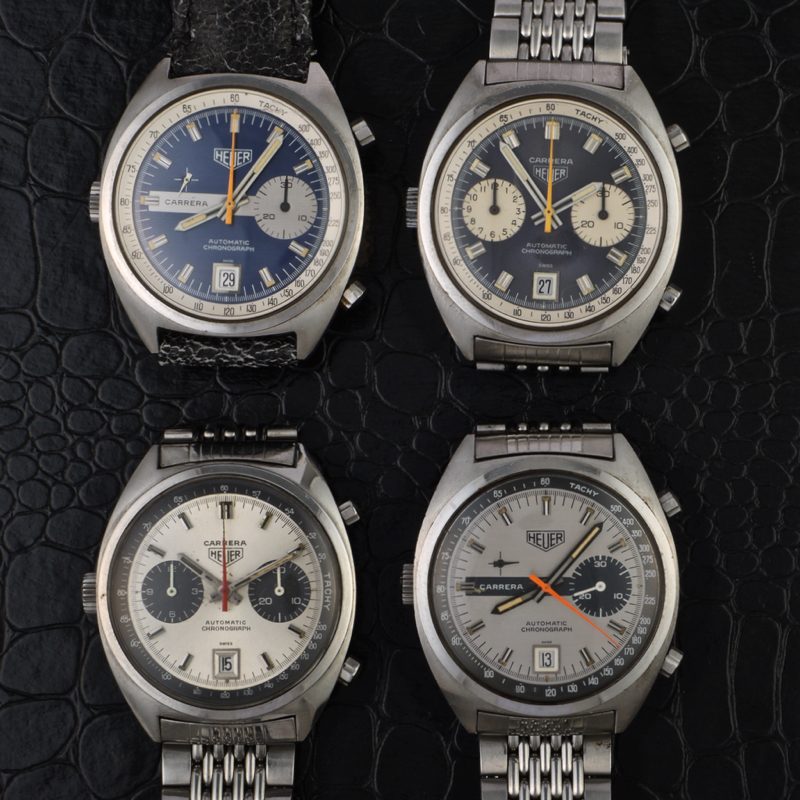
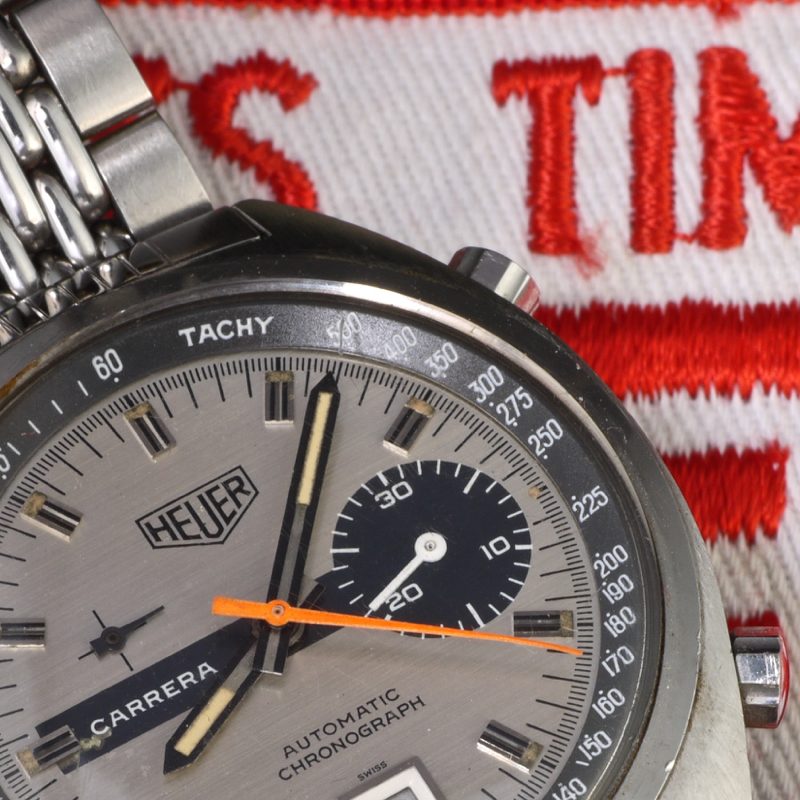
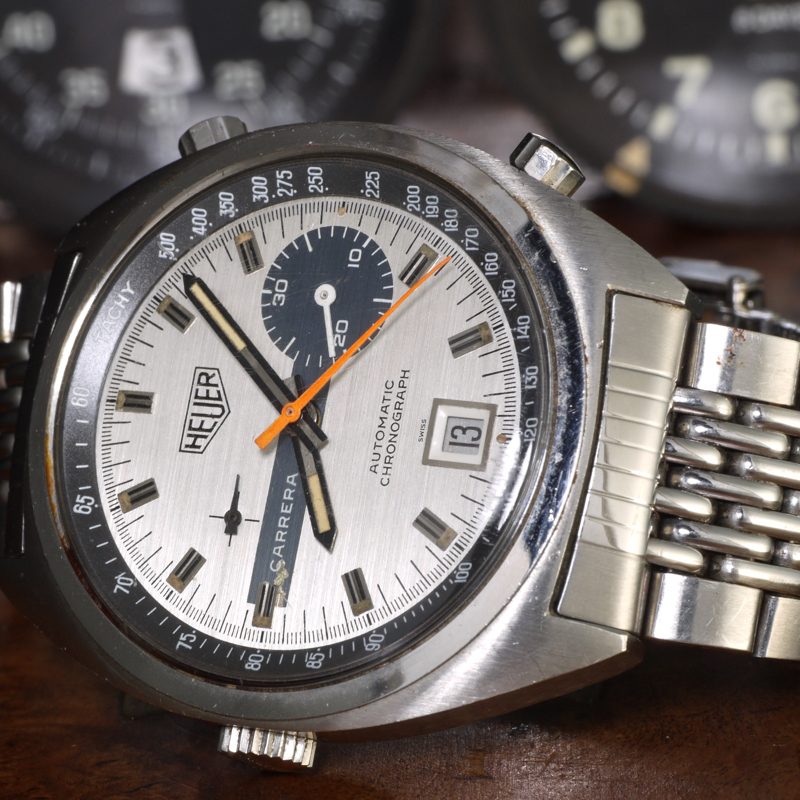
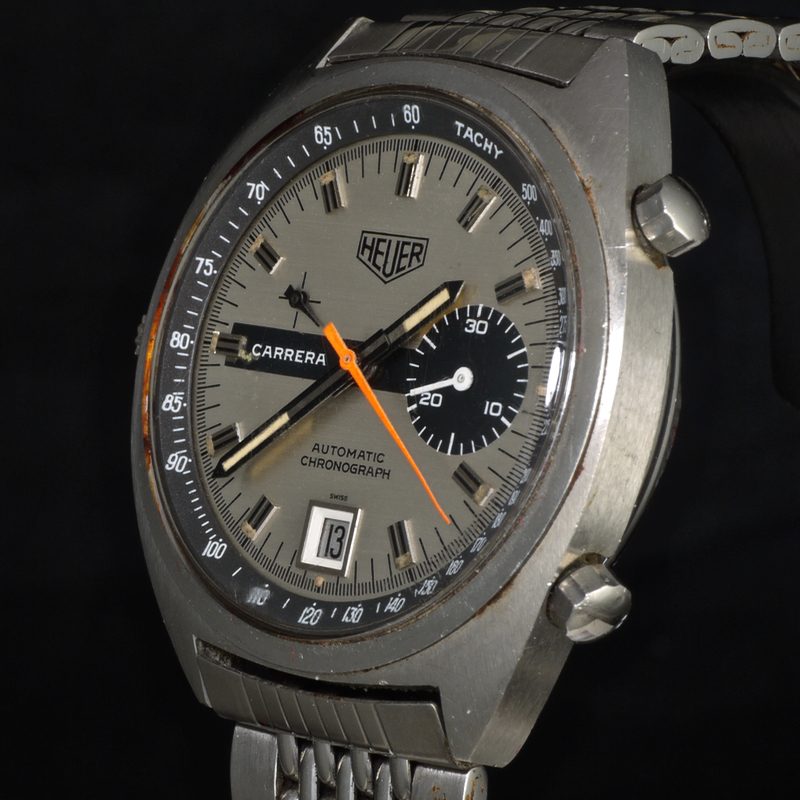
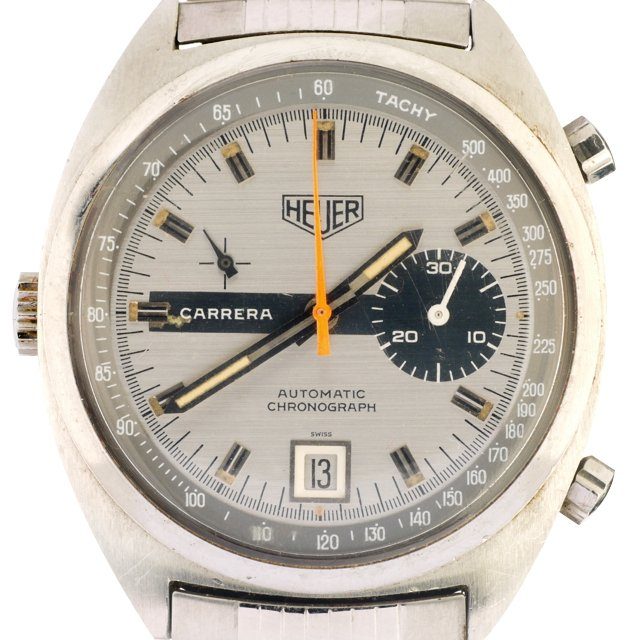
Heuer Carrera
Jim Morrison dies in Paris at age 271972 Heuer Carrera ref. 1553 S.
in 1972 the new Carrera was added to the portfolio, the caliber 15 features a small permanent second at 10 o’clock and is a hard to find watch. Blue dial with one subsidiary for 30-minute recording, off set running seconds dial, outer Tachymeter scale to measure how fast an object is moving.
Heuer caliber 15, an evolution of the famous caliber 11, based on the Buren 1282 with micro-rotor was not designed to attach a chronograph mechanism – this led to the crown at 9 o’clock. While the el Primero has survived until today, the expensive design made this movement a victim of the quartz boom. Consequently, the number of these watches with the crown on the wrong side is pretty low.
It all started in 1860, with Edouard Heuer setting up a workshop in Bernese, a predominantly French-speaking area of Switzerland close to the French border, a small town even now with a population under 5000. However, it is no stranger to watch companies, having also been where Breitling was founded and having been home to Longines. Of course, those companies were artisan workshops producing small numbers of mostly silver-cased pocket watches.
In 1914 Heuer made the first wristwatch for men, they used pocket-watch movements and reflected demand for wristwatches that would only increase during the First World War and after.
1920 was the first time in 8 years that an Olympic Games had been held, following the cancellation of the 1916 Berlin events. Heuer had some prominence as a sports timing company by this point and was pleased to be selected as the official timer of the Antwerp games. This was subsequently extended to the 1924 games in Paris and 1928 in Amsterdam: this cemented the brand marriage between timing and sports.
For today’s collectors, the heyday for Heuer really began in the mid-1930s. I think that’s also probably true for many other brands. Heuer began making pilots chronographs in 35. These were used by Air Force pilots primarily, a lot of them in the German Air Force. For most Heuer collectors, these pilot chronographs from around 1935 are the first real survivors that regularly can be found in the market today.
In the 1960s and 1970s, no brand was more prominent in motorsports timing than Heuer.
